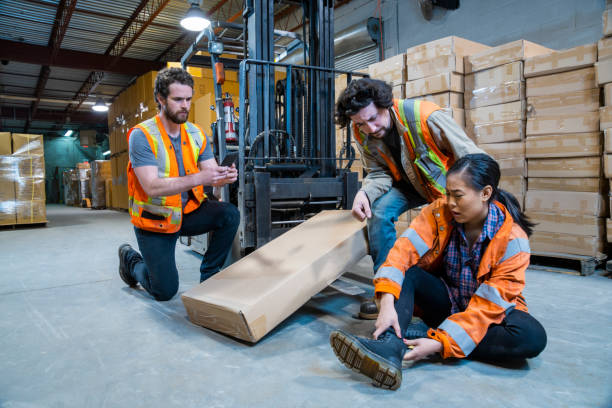The Forklift Is A Dangerous Piece of Equipment– Pay Attention!
The Forklift Is A Dangerous Piece of Material Handling Equipment– Pay Attention!
One of the most commonly used pieces of material handling equipment in any warehouse or distribution center is a forklift. When used properly, the forklift is a vital and necessary piece of equipment which makes warehouse work faster and easier. However, when used improperly, the forklift is a very dangerous piece of equipment.
Operator Certification and Training
The Occupational Safety and Health Administration (OSHA) has many rules for the operation and use of a forklift. These rules were enacted many years ago after many accidents occurred in industrial settings. One of the key rules is the certification of the operator. No forklift operator can legally operate a forklift unless he/she is certified to do so. This is very important– the operator has to take classroom and field training, successfully pass a written test and demonstrate that he/she can safely operate the piece of equipment. Additionally, each operator must be recertified every 3 years! This just like continuing professional education. The classroom training is prescribed in OSHA regulations as to the topics that must be covered, however, the training is both robust and significant. If you are responsible for individuals in a warehouse who operate forklifts, ensure that each individual is trained and certified to operate the forklift.
Equipment Maintenance
Like any piece of industrial equipment, the forklift must be periodically checked for proper operation. Fluid levels, battery charging, tire pressure as well as tire tread, hydraulic cylinder operation are just some of the parts that must be checked. Warning devices such as horns, annunciators, lights, both flashing and strobe, should be checked at least 3 times during each shift– at the beginning of the operational shift, in the middle of the shift at lunch break and just before the end of the shift. These checks ensure that the warning devices are serviceable and operational, with the expectation that they will be adequately and sufficiently warn individuals of the operation of the forklift.
Equipment Sizing
Forklifts come in different sizes, shapes and capacities. Always ensure that you use the proper forklift for the task at hand. We recently had a case where the load was heavier than the capacity of the forklift. What happened? The forklift “bucked”, the load could not be lifted and the forklift “came up” and rested on the front tires, the back tires off the ground. The load slipped and caused bodily injury to the worker who was standing on the truck bed! This case has mitigating factors, but the forklift was not sized properly for the load for which it was to carry!
Operating the forklift with the forks in the “trail” position is very important. “Trail” position– the forklift is in reverse, with the operator watching where he/she is travelling, with the forks and load on the front of the forklift.
Speed When Driving a Forklift
Forklifts can attain a speed of 10-12 miles an hour. However, in any enclosed warehouse or distribution center environment, the forklift should never be operated more than about 3-4 miles per hour. Why? Safety– we don’t wish to strike anyone or travel so fast that if an immediate stop is required, the load will slip off the forks and injury someone.
Common Sense is the Key to Safe Forklift Operation
Using good common sense is the key to good forklift operation. Going slow, ensuring that the horn/annunciator, strobe/flashing light are all operational will ensure that safe operation of the forklift. An operator who is currently certified, has passed certification training and is careful in the operation of the equipment ensures that accidents should not occur.
Be careful when operating a forklift– this equipment is very unforgiving!







